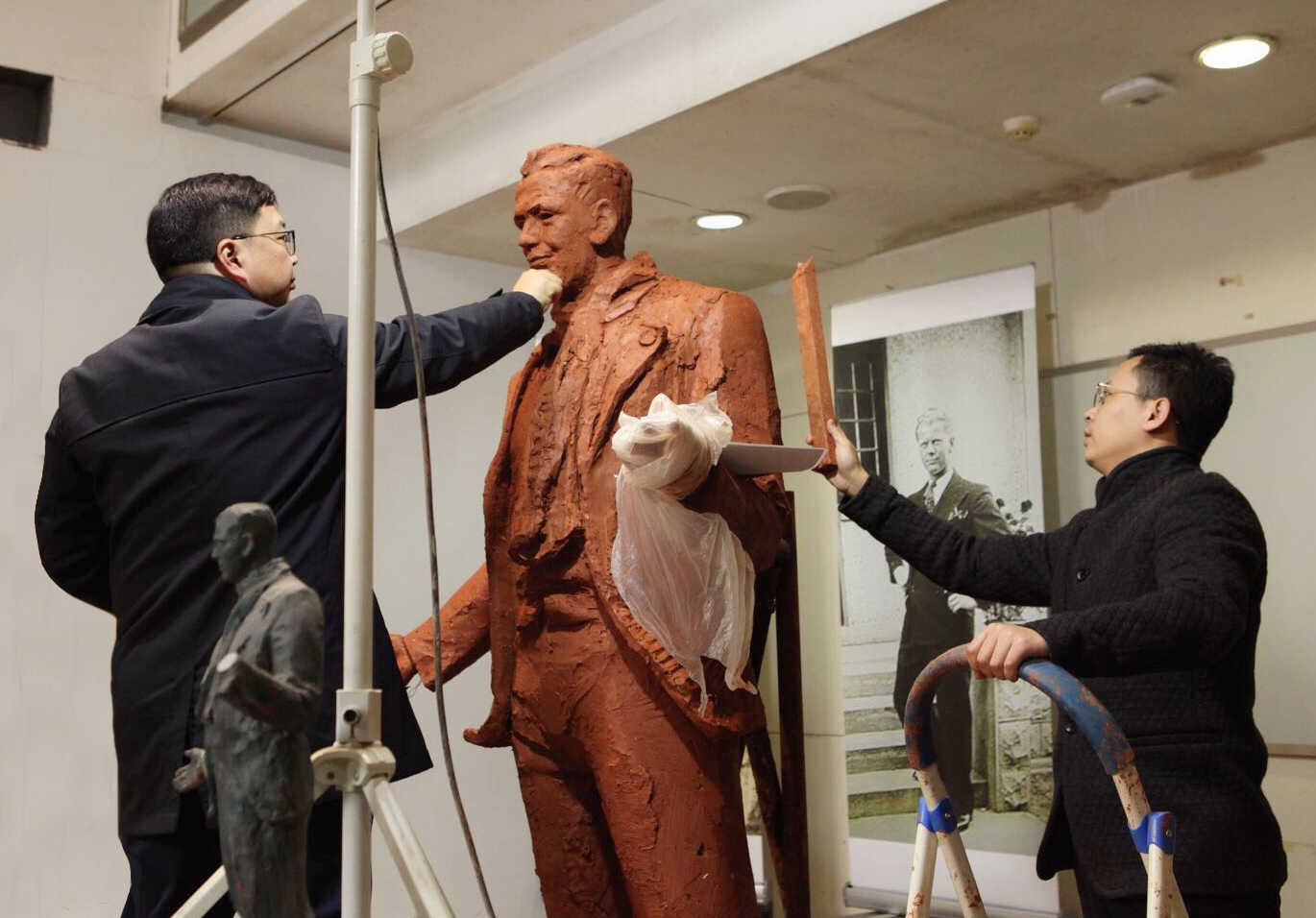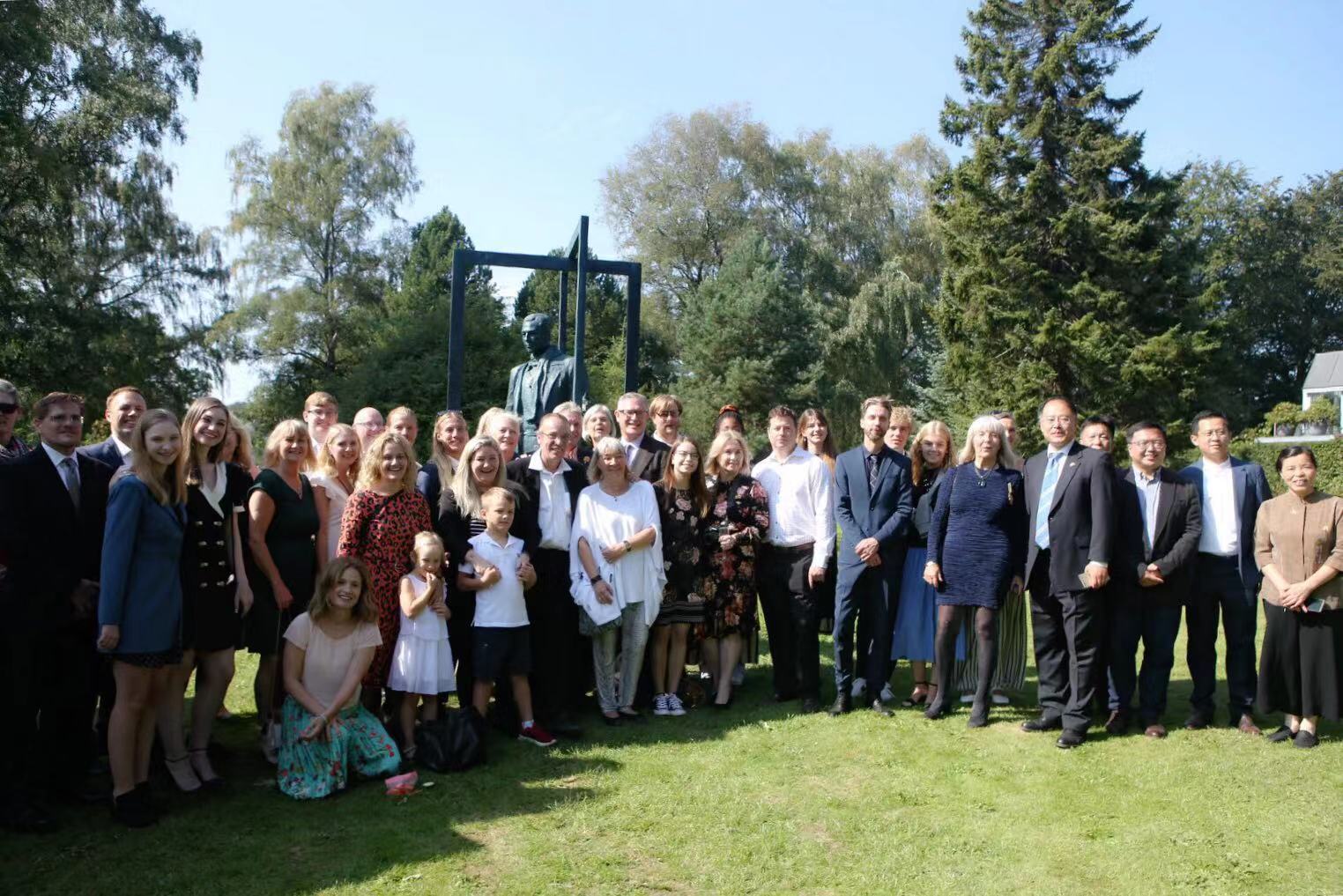Bernhard Arp Sindberg, born in Aarhus, Denmark, traveled to China in 1937. He fearlessly provided refuge for Nanjing residents during the horrific Nanjing Massacre. Thanks to his efforts, more than 20,000 Chinese were saved from Japanese invaders' slaughter.
As the country marked the Victory Day of the Chinese People's War of Resistance Against Japanese Aggression on Tuesday, commemorative events for the hero were held simultaneously in China and Denmark.
NANJING, Sept. 3 (Xinhua) -- As China marked Victory Day of the Chinese People's War of Resistance Against Japanese Aggression Tuesday, two photo shows in memory of Danish hero Bernhard Arp Sindberg went on simultaneously in the Chinese city of Nanjing and the Danish city of Aarhus.
The exhibition held in the Memorial Hall of the Victims in Nanjing Massacre by Japanese Invaders in Nanjing, capital of east China's Jiangsu Province, has attracted more than 200,000 visitors since it opened Saturday.
Apart from the exhibition, a statue of the hero, jointly designed by two Chinese artists and a Danish artist, was unveiled by Denmark's Queen Margrethe II in Marselisborg Memorial Park in Aarhus, the birthplace of Sindberg, Saturday.

Denmark's Queen Margrethe II unveils the statue of Bernhard Arp Sindberg during a ceremony in Aarhus, Denmark, Aug. 31, 2019. (Xinhua/Lin Jing)
Sindberg, along with German businessman John Rabe and U.S. priest John Magee, was among the foreigners who had protected Nanjing residents, despite the risks during the war.
Tuesday marked the 74th anniversary of the victory in the Chinese People's War of Resistance Against Japanese Aggression and the World Anti-Fascist War.
Sindberg traveled to Nanjing in December 1937, at the age of 26. He worked in a cement factory, where he and a German engineer saved more than 20,000 Chinese during the Nanjing Massacre.
Outside the refugee shelter, Japanese invaders slaughtered about 300,000 Chinese civilians during a six-week rampage after they captured Nanjing, then China's capital, on Dec. 13, 1937.
Sindberg provided food and medical treatment for the Chinese refugees in the factory. He also recorded the atrocities committed by the Japanese invaders in the city with photographs and letters, which became historical evidence to reveal the truth about the horrific massacre to the world.

Visitors tour the photo exhibition "Bernhard Sindberg: A Danish Hero of Nanjing" in Nanjing, east China's Jiangsu Province. (Xinhua/Ji Chunpeng)
The two exhibitions focus on Sindberg's 106 days in Nanjing and the development of the city over the past 82 years.
Zhang Jianjun, the curator of the memorial hall, said the exhibitions can help more people know the Danish hero, as well as pass on and strengthen the friendship between China and Denmark.
Two Chinese artists Shang Rong and Fu Licheng, from Nanjing University, cooperated with Danish artist Lene Desmentik in designing and making the sculpture of Sindberg.

Chinese artists Shang Rong (C) and Fu Licheng (L) and Danish artist Lene Desmentik pose for a group photo with the statue of Bernhard Arp Sindberg during a ceremony in Aarhus, Denmark, Aug. 31, 2019. (Xinhua)
"He is a legendary figure. And in the process of creation, his image becomes clearer. We found his photos, in his youth and old age, archived in the memorial hall and a library in Nanjing," Shang added.
The statue, measuring three meters in height, stands straight with his arms open.
"It's a symbol of welcome, both for the refugees and the peace," Shang said.
Desmentik later created the "gate of hope" -- two-door frames encircling the statue, saying the structure represented the gate of Nanjing, safeguarding the city and people against wars, as well as a gateway to the future.

Chinese artists Shang Rong (L) and Fu Licheng work on the statue of Bernhard Arp Sindberg in Nanjing, east China's Jiangsu Province, in March 2019. (Xinhua)
"We erect the statue in Sindberg's hometown to remember his humanity, fearlessness, and to remind the world to learn from history and cherish peace," said Peng Zhengang, deputy director of the department of publicity with Nanjing Municipal Committee of the Communist Party of China, at the unveiling ceremony in Aarhus.
Peng said special yellow roses named after Sindberg have been planted in both Nanjing and Aarhus, to commemorate the hero.

Family members of Bernhard Arp Sindberg and artists who created Sindberg's statue, pose for a group photo with the statue during a ceremony in Aarhus, Denmark, Aug. 31, 2019. (Xinhua)
In April 2006, Sindberg's sister, 80-year-old Bitten Andersen, and six relatives of the Sindberg family from the United States and Lebanon planted the Sindberg Roses in the Peace Square in Nanjing.
The following year, the seedlings were transplanted to the newly-built Memorial Hall of the Victims of the Nanjing Massacre of the Japanese Invaders, where the "Nanjing Sindberg Rose Garden" was specially erected.
Peter Harmsen, a Danish historian of World War II, wrote a biography of Sindberg.
Recently, two publishing houses from China and Denmark jointly signed an agreement to release the Chinese version of the book.
Harmsen said he visited Nanjing many times during the writing of the book. He traced Sindberg's footsteps in the city, experiencing its past and its new look.
"The first stop of my trips was the Yanziji Middle School, which is next to the cement factory, where Sindberg opened the gate to let thousands of Chinese take refuge in Nanjing during the Japanese invasion," he said.
Now, the middle school has forged a friendship tie with a Danish high school.
Harmsen said he was touched by the heritage and cooperation opportunities brought by Sindberg's humanitarian deeds.
(Video reporters: Jiang Fang; Video editor: Wang Han)



